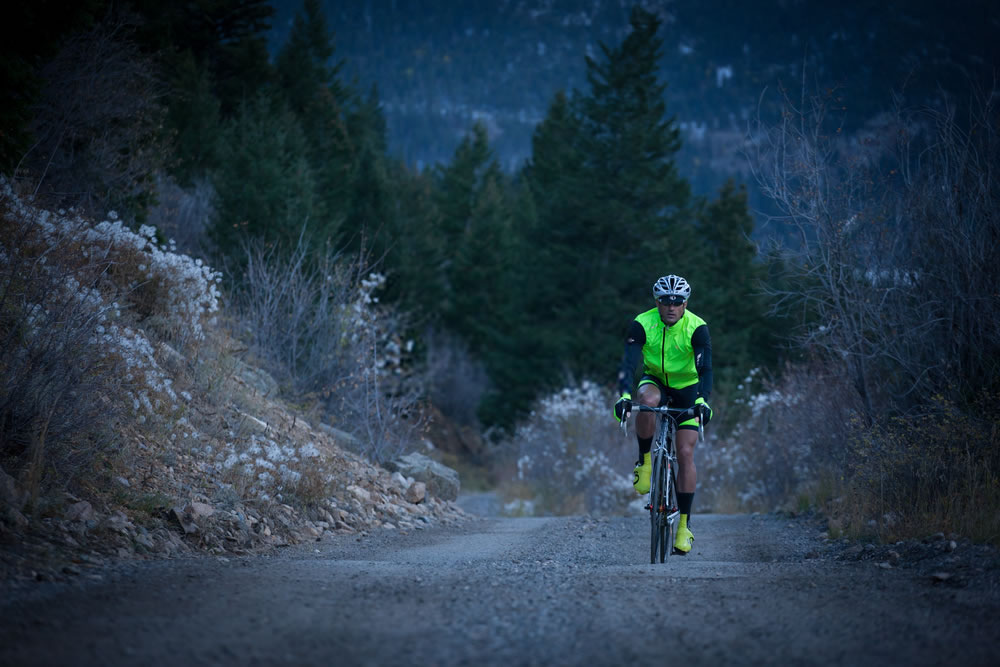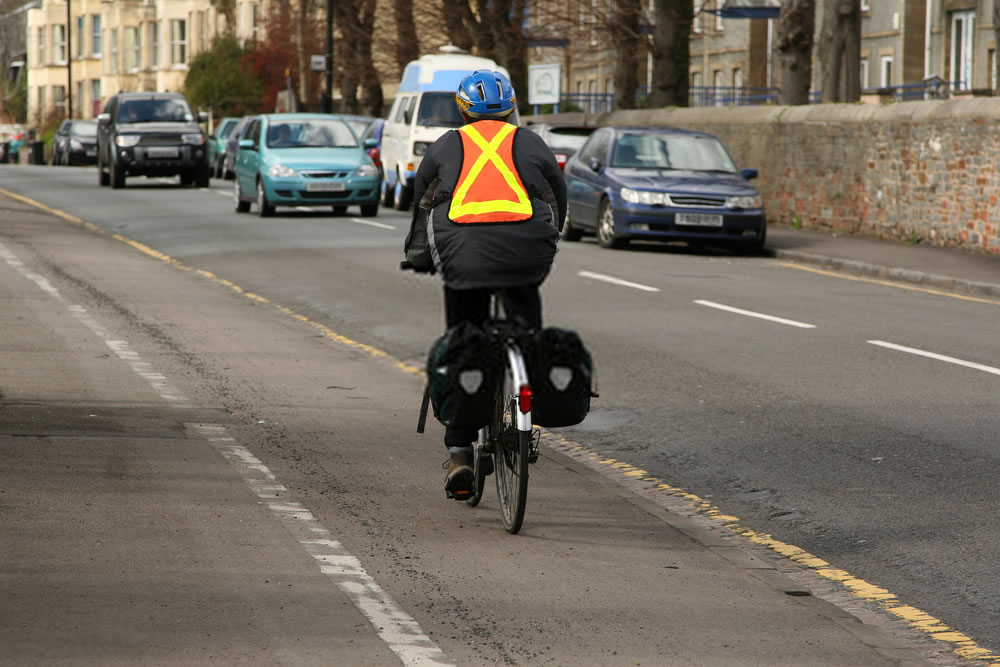We cyclists are the most powerless of all street clients. We’re up to multiple times bound to get harmed out and about than drivers are, and up to multiple times bound to get killed.
They’re concerning details, and it’s up to us all to guarantee we’re as obvious as could be allowed (and in this way as protected as could be expected under the circumstances) while riding out and about. In any case, how would we do that? Is it just an instance of wearing more brilliant garments? What’s more, shouldn’t something be said about with regards to riding around evening time? CyclingTips Australian proofreader Matt de Neef examines.
Each cyclist has a story to recount the time a driver didn’t see them, prompting a frightening close miss or more awful, an accident. What’s more, in the event that you’ve been riding for any period of time, you’ve likely been associated with a few such occurrences yourself.
This experience isn’t only borne out episodically — inquire about proposes that most of the accidents including a cyclist and engine vehicle are an instance of “looked however neglected to see”. That is occurrences where the driver may well have been glancing in the area of the cyclist, yet neglected to perceive that what they were seeing was a cyclist. There’s an explanation SMIDSY – “Sorry mate, I didn’t see you” – has become such a commonplace abbreviation among cyclists.
There are a few factors that can make a cyclist difficult to spot, including ‘visual mess’ on or adjacent to the roadway, the light conditions at that point and, critically, the conspicuity of the rider.

Remaining VISIBLE
There have been numerous examinations in ongoing decades exploring how “perceivability helps” influence the straightforwardness with which drivers can spot cyclists out and about. In a 2009 writing audit, nine papers were discovered that looked at the perceivability of fluorescent and non-fluorescent hues. Everything except one of those nine preliminaries found that fluorescent hues were increasingly unmistakable to drivers. Fluorescent attire in red, yellow and orange — hues that balance essentially with the riding condition — was seen as most effective1.
Another paper, distributed in 2007 by analysts in New Zealand, analyzed the occasions cyclists spent off work because of accidents including an engine vehicle. They found that riders who never wore fluorescent cycling pack invested eight fold the amount of energy away from function as riders who consistently wore such dress.
Concentrates like these appear to point a reasonable way: riders who wear fluorescent cycling gear aren’t simply progressively noticeable to drivers, they’re likewise less inclined to be hit and harmed.
Be that as it may, this is just piece of the story in light of the fact that such discoveries are just important when thinking about riding in sunlight.

Late evening RIDING
Regardless of whether it’s driving to and from work in the winter months or taking off for a pre-sunrise pack ride, the majority of us do probably a portion of our riding in obscurity. What’s more, as you may expect (or may have seen direct) riding around evening time is more risky than during the day. Truth be told, some 35% of all deadly cycling crashes occur around evening time, in spite of the reality, just about 10% of cyclists ride after dull.
While fluorescent apparel is successful at expanding rider perceivability during the day, it’s to a great extent pointless around evening time.
Fluorescent apparel is incredible during the day yet not all that great around evening time. Picture: Bicycle Network
Fluorescent apparel is incredible during the day yet not all that great around evening time. Picture: Bicycle Network
During the day, fluorescent apparel takes bright (UV) light from the daylight we can’t see — and changes over it into the light we can see. The outcome is an expansion in the aggregate sum of obvious light that is reflected off the attire, giving fluoro dress a more splendid appearance. This is especially the situation in low-light conditions, around sunrise and nightfall.
Around evening time, there’s no UV daylight to change over, so the fluorescent material isn’t viable. Thus with the end goal for cyclists to be as unmistakable as conceivable in obscurity, intelligent, as opposed to fluorescent attire, is required.

Intelligent CLOTHING
It’s naturally evident that intelligent garments makes us progressively unmistakable in low-light conditions. As opposed to being consumed by our dress, light from vehicle headlights and streetlights is reflected close by drivers, making us more obvious than we in any case would have been.
Coats with intelligent framing are the most widely recognized bit of intelligent apparatus utilized by cyclists be that as it may, maybe shockingly, they don’t appear to be the best.
In the late 2000s and mid 2010s, Professor Joanne Wood from the Queensland University of Technology lead a group of analysts concentrated on cyclist perceivability and the advantages of intelligent apparel. In an investigation distributed in 2010, Wood and her group tried the evening perceivability of a scope of various garments arrangements utilized by cyclists:
an) a dark tracksuit
b) a dark tracksuit and a fluorescent yellow cycling vest with no intelligent markings
c) a dark tracksuit and a coat with intelligent markings
d) a dark tracksuit, a coat with intelligent markings and intelligent strips situated on the cyclist’s lower legs and knees.
The outcomes are striking: “In general, drivers distinguished the biggest number of cyclists wearing the vest in addition to the lower leg and knee reflectors (90% effectively perceived), trailed by the intelligent vest alone (half), the fluorescent garments (15%), and in conclusion dark garments (2%).”2
These outcomes reflect examine discoveries on the perceivability of walkers around evening time and can be clarified by an idea known as organic movement (or ‘biomotion’) — that is, “our visual affectability to examples of human movement”.
An intelligent coat, while obviously more viable than straightforward dark dress, limits intelligent material to the rider’s middle which, as indicated by Professor Wood and her partners “shows significantly less movement data to moving toward drivers”.
Intelligent strips on the knees and lower legs, then again, go here and there as the cyclist moves, helping drivers to more readily perceive the item before them as a moving cyclist, rather than a basic light source3.
This discovering appears to prompt an undeniable proposal for cyclists: in the event that you need to boost your wellbeing around evening time, don’t simply wear intelligent attire; guarantee that the intelligent apparel incorporates intelligent strips worn on the lower legs and knees.
Be that as it may, as we probably are aware, street cyclists can be a whimsical, design cognizant pack.
Design VS SAFETY
Analysts have since a long time ago demonstrated that cyclists realize the advantages of intelligent attire however decide not to wear it. This probably won’t be astonishing while thinking about the style and execution cognizant street riding scene.
Intelligent garments has customarily come up short on the tasteful intrigue and execution of other, increasingly sleek unit alternatives, while additionally being related with easygoing or suburbanite riding. Be that as it may, presently, with significant unit brands jumping aboard, intelligent rigging is currently being intended for the exhibition advertise.
Sugoi, Proviz, Hey Reflect’o and Specialized are among brands to have created intelligent coats that stand apart stunningly when lit up via vehicle headlights and other counterfeit light sources. And afterward there are the items that bridle the intensity of biomotion to additionally build rider perceivability.
Giro has grown stunningly intelligent cycling shoes, Castelli and Sugoi are among those to have made intelligent overshoes, and any semblance of Pactimo and Proviz have made winter tights with enormous intelligent boards underneath the knee.
The reality the large street cycling brands have moved into the intelligent attire space is huge.
High-perceivability coats, for example, have been around for quite a long time, yet as of late have they gotten compelling as cycling coats in their own right, keeping riders shielded from downpour and the virus. Since such apparel works as street cyclists anticipate that it should — as a coat and as a wellbeing gadget — and on the grounds that the enormous brands are currently planning intelligent pieces in view of the design cognizant street showcase, wearing a more secure cycling unit has apparently become progressively ‘adequate’ than at any other time.
ON REFLECTION
A few examinations recommend as meager as 33% of cyclists wear intelligent rigging while at the same time cycling. Be that as it may, considering the ongoing development of the intelligent cycling pack showcase, it could be the ideal opportunity for new research to see whether more riders are currently wearing such apparel.
Meanwhile, it ought to be evident that there are steps we would all be able to take to guarantee we’re as simple to spot out and about as could be expected under the circumstances:
For most extreme perceivability during the day, cycling pack ought to be as brilliant as could be expected under the circumstances, in a perfect world fluorescent.
When riding around evening time, fluoro rigging ought to be exchanged for apparel that is as intelligent as could reasonably be expected, with specific consideration paid to the knees and lower legs.
The utilization of solid front and back lights ought to be guaranteed.
No rider needs to be less sheltered out and about, yet up to this point it’s been something of an exchange off: more secure dress that doesn’t shield from the components and doesn’t look extraordinary, versus garments that protects from the components and looks great yet isn’t as simple to see. No doubt with late improvements in the unit business, riders would now be able to have the best of the two universes.
Commentaries
1. As indicated by the 2009 writing audit, yellow was seen as the most noticeable non-fluoro shading in six preliminaries. White was more obvious than dark and dark in three preliminaries.
2. Strangely, while Wood and partners found that cyclists by and large will in general overestimate that they are so unmistakable to other street clients, they disparaged how noticeable they would be while wearing intelligent strips on their lower legs and knees.
3. Educator Wood and her partners appeared in a resulting paper that the utilization of bicycle lights really decreased the viability of intelligent lower leg and knee strips. Wood offers a basic clarification for this astonishing discovering: “This example may have come about because of the bike light (mounted on the handlebars) going about as a glare source that decreased the drivers’ capacity to see the intelligent markings on the lower legs and knees.” While Wood et al. try not to state to such an extent, no doubt the blend of intelligent lower leg and knees strips + lights, while degrading the perceivability of the intelligent things, is still more obvious than lights all alone.
original from https://cyclingtips.com/2016/06/does-reflective-and-fluorescent-clothing-make-us-safer/

